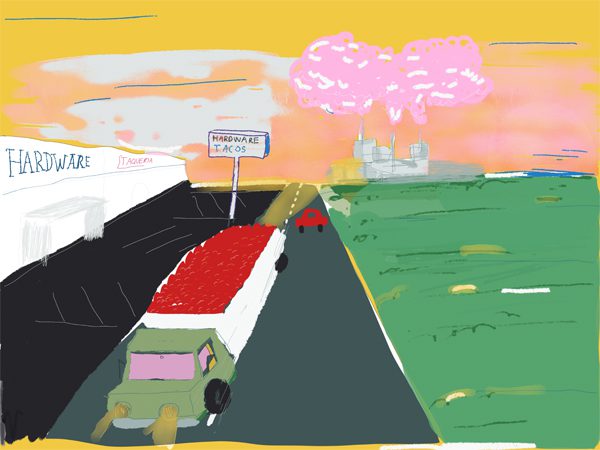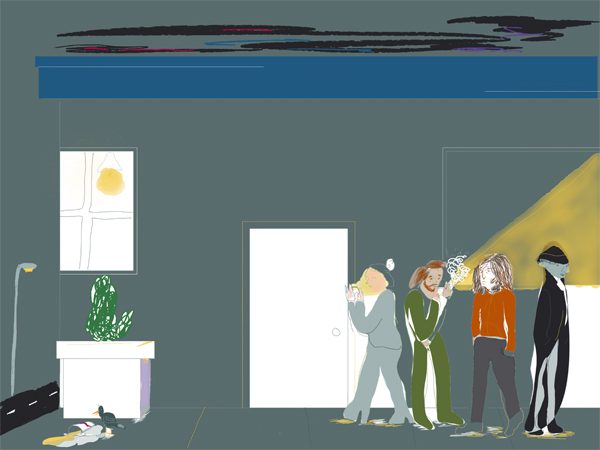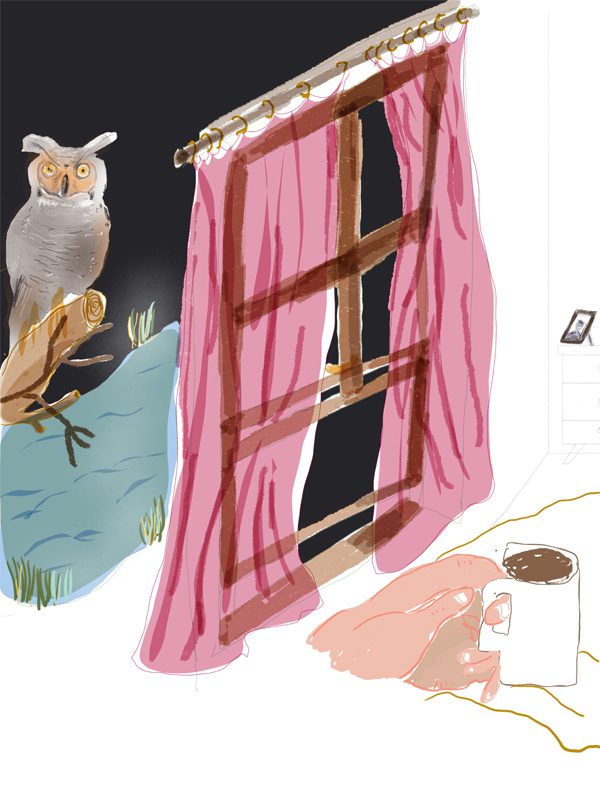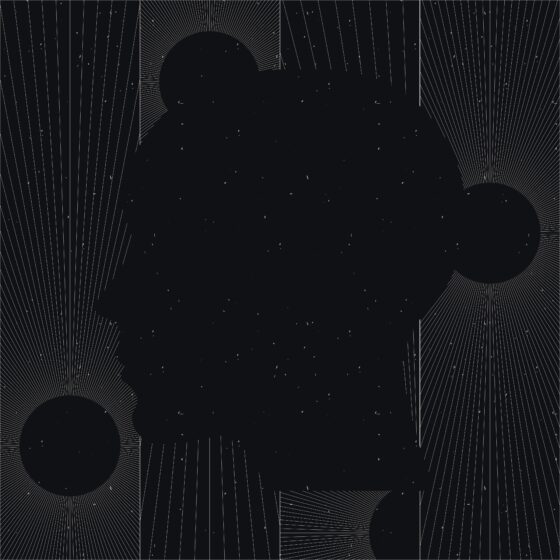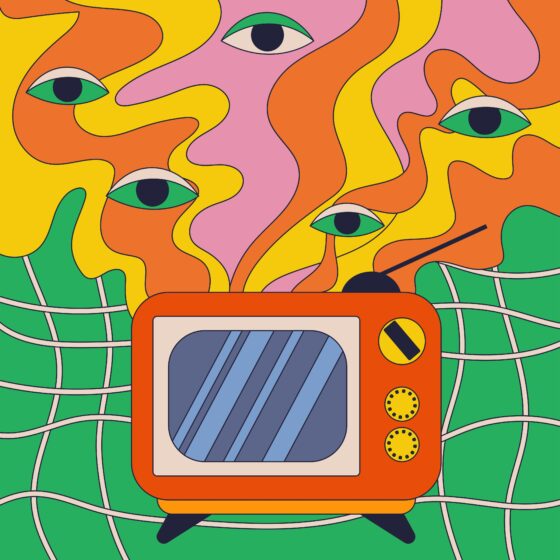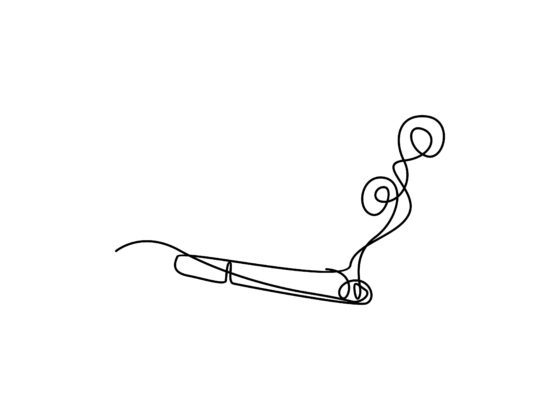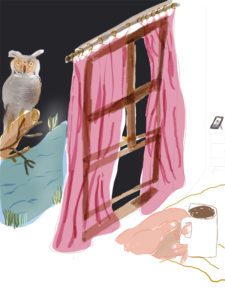
August
Steam clouds billow from the tomato processing plant along Main Street, lit cotton candy pink by the rising sun. It’s the peak of harvest in Yolo County and canning is in full swing. I drive past strip malls, the hardware store, and a few taquerias—the same road I traveled every month more than twenty years ago to pick up my welfare check and food stamps at the county office. From her booster seat, my daughter would push her nose against the back window of our faded red Dodge Colt and ask me if that factory was where clouds came from as steam pushed its way into the sky in one big mass and then broke into disparate puffs.
I arrive at my daughter’s apartment and text that I’m waiting for her in the parking lot. She gets into the car, swiping at her nose with the back of her hand and rubbing her arms even though it isn’t cold. I wait for her to fasten her seatbelt and hand her one of the mugs of coffee from the middle console.
“Extra sugar and milk in this one, and there’s a banana and crackers there when you’re able to eat something,” I gesture to a bag in the back seat as I pull out of the lot.
“Thanks,” she mumbles, pulls the sun glasses from the top of her head over her eyes, and leans back against the head rest. Bleached bangs hang over the edge of her glasses and I can’t tell if her eyes are closed. We’re quiet heading east, over the bypass where green fields of rice glow with morning dew. NPR on the radio. Sips of dark roast. Double-trailer tomato trucks haul Sacramento Valley’s summer bounty from the fields, dropping fruit along the curves of on and off ramps.
I’ve started a new daily routine of waking at 5 a.m., making coffee, feeding the cats and hitting the road to pick up my daughter for the fifty-mile round trip to the nearest methadone clinic in Sacramento before I drop her off at work and head into the office. After three years of numbing her need for heroin with a substitute drug, my daughter says she’s done with this bullshit. The bullshit of counselors who don’t stay on staff for long; the bullshit of a clinic supervisor who always looks zoned out on benzos; the bullshit of watching the same strung-out crowd come in the morning to swallow a dose and then swap drugs in the parking lot; the bullshit of trying to hold down a full-time job without a car; the bullshit of a six-hour bus ride to get to the clinic and back; the bullshit of sugar cravings and weight gain; the bullshit of coming up with excuses when her boss wants her to come in for a 6 a.m. shift but she needs to get to the clinic first and they don’t start dosing until 6:15 a.m.
She had ‘take-homes’ (the doses that methadone patients can take home to last throughout the week) until a month ago when she lost her car, couldn’t make it to the clinic every day because of her job, and missed three counseling appointments. She was trying to stretch her take-homes and make one last for two days, cutting her dose in half and sending her into nasty withdrawals. Runny nose, shaky legs, back pain, chills, vomiting.
“You can’t wean yourself off the methadone this way,” I told her. “You need a tapering plan approved by the clinic counselor. Get a plan and I will drive you every day if I have to until you’re done.”
Fingers crossed, she only has ten more weeks of waiting in line for her dose of pink-tinted liquid in a plastic cup that keeps her from the needle.
Today marks week one.
*
I don’t park near the cars at the front of the clinic, the cars that pull sideways into a space, cramming up against another vehicle so you can’t get in or out. A faded maroon sedan missing a trunk lid; a blue compact with bungee cords holding the hood down, duct tape securing a mirror and back signal lights smashed out. There are a few decent cars lined along the road nearby—blue Toyota Highlander, red GMC work truck, silver Infiniti. They don’t park near the front of the clinic either. The closer you park to the clinic, the more you can smell urgency and desperation, stale piss and cheap cigarettes.
A young man in a wheelchair gets off the bus, pushing fast with his one foot toward the clinic.
“Lost his other leg in Afghanistan,” my daughter tells me. “He takes too many benzos though. Poor guy, he’s really fucked up.”
An ancient, bent-over man (probably not out of his fifties) walks unsteady to the pipe where irrigation water keeps the grass green. He takes off his ball cap, twists a valve, and rinses his scraggly grey beard and hair while gulping water cupped in his hands.
Clients loiter outside the clinic after dosing, light cigarettes near the sign that reads “No smoking within twenty-five feet of building entrance,” gnaw on gums where teeth are missing. A middle-aged woman with a dry, kinky perm, officer worker type, purse over one arm. Skinny white man with leather brown skin, backward baseball hat, scruffy mustache, tattoos on arms, holding a small Styrofoam coffee cup. Early morning crowd people who rush in, rush out, on their way to work. Woman with hard face, over-processed long black hair puffing smoke into the air. You can only tell the counselors from the clients by the ID cards and keys hanging from their necks.
Mid-September
A crescent moon sits high over the I-5 bypass and it’s still too dark to see the rice ready for harvest. My daughter sits in the passenger seat, eyes closed, cradling her mug of coffee. She’s tapering off the methadone by several milligrams a week, on her period, and not feeling well to boot. Her back pain is intense—one of the withdrawal side effects that hits her pretty hard after her car accident where she tore a ligament somewhere between her shoulders. Weed, ibuprofen, hot showers—it still doesn’t take the pain away, she says. It keeps her awake.
I understand the fatigue. I was selected as a juror for a two-month trial a couple weeks ago—a case that comes to me every time I close my eyes. Autopsy photos of a dead child revealing posterior rib fractures, bone ends displaced from each other. Eighteen fractures of fresh, healing and healed—all different stages of hurt, of hands gripped tight, of anger and adrenaline. Brain swollen so that it pushed skeletal sutures apart and oozed out through the occipital bone at the back of his head where his mother would have once cradled him. Microscopic images of dead neurons. MRIs that reveal a brain where the grey matter no longer appears distinct from white matter—a broken brain. It doesn’t matter. It all matters.
I don’t really want to talk this morning anyway. I learned from my ex yesterday at our son’s soccer game that my daughter pawned my wedding ring when she was staying with him. The ring he placed on my finger under an oak tree and then asked for it back years later when I told him I wanted a divorce. A nearly perfect carat.
It cost him $800 to get the ring out of hock. He only knew the ring was gone when he opened a piece of mail addressed to her with the return address of a pawn shop. She denied it until he took her on a ride and ended up at the shop where she broke down and confessed. It was the longest conversation I’ve had with my former husband in six years.
I don’t want to talk to her about it. I don’t want to know in this moment if she is still telling lies. I only want to hold onto hope. The hope that we have six weeks left of driving to the clinic before she will swallow the last dose of methadone. The hope that she wants to be clear and free. The hope that by the time she is finished going to the clinic, I will be done with this trial and I’ll be able to sleep again.
*
A line forms outside the clinic in the darkness of 6 a.m. The backlight of a smart phone illuminates one young woman’s face, her hair pulled into a neat bun. I think she’s the one who gets a ride in the Lexus SUV that parks on the street in the safe zone. The others stand, shifting from one leg to another, held together by quiet need in this hour when many people are still sipping their first cup of coffee. From my car, I can see my daughter waiting in line, a puff of smoke rising every now and then above her head as she sucks on her e-cig. At 6:15 a.m., the line starts moving forward and one by one, people disappear into the lighted rooms where they sign in and wait for the automated dispensers to fill a plastic cup with however many milligrams of methadone they take daily to keep them from getting dope sick.
Some are dope sick anyway: legs twitching, nauseous, chilled, and shaking—they are usually the ones double-dosing, my daughter told me. Four hours after taking the methadone, they still get high on heroin. By the time they get here the next morning, they’re in a bad way again. But the clinic will keep pouring them a dose as long as they keep paying—or Medi-Cal does. Even if their urine tests positive for heroin. It just means they don’t get take-homes.
It’s when my daughter gets back into the car after dosing that she starts waking up, sharing a new song from The Kills on her iPad.
Baby lately the plans we’re making
Are the shape of things that never come…
She even looks like Alison Mossheart right now—dark brunette roots, bleached rock star hair, aviator sunglasses. I should have started listening years ago to the music she idolized. Maybe she was trying to tell me then of the siren calls she heard—the lure of cocaine and finally heroin that could numb her pain.
Hold your horses, the lights up
Can’t feel it coming back around
I focus on the road as she rattles off about China white, Persian brown, black tar. The purer China white is more common in Europe. Harder to find here and a lot more expensive. Persian brown is the stuff she could get from her dealer who brought it into San Francisco from Oakland when she lived in the city. It comes up from Mexico. Her dealer picked up his supply in Stockton. Black tar is the cheaper shit, sometimes cut with shoe polish. If it’s really sticky, it’s not good, she says. You have to look for the hard, more obsidian type.
I imagine the box of obsidian flakes and chunks at home—gathered from explorations in the desert. Their edges cut through skin, draw blood.
She tells me her dealer had pretty good stuff—not the high-end China white, although she’s done that, too, but at least his was consistent, a lot better than the stuff you’d find in the Tenderloin. I keep my eyes on the road as I drive west across the causeway.
She explains smoking vs. snorting vs. slamming. Smoking wastes a lot of the heroin. I think of her paternal grandfather in Iran who has smoked opium for decades. Her father forbids her talking to him about their shared addiction.
Snorting heroin goes straight to the sinuses, delivering a pretty quick hit. But slamming it goes straight to the bloodstream, a flood of warmth and ease and calm. Once she started shooting up, she couldn’t go back.
October
Bobby Dazzler’s huge inflated pumpkin glows like an orange orb along Highway 113 north to Woodland. The voice of NPR’s Scott Simon comes over the radio as I drive to my daughter’s apartment. He tells the story of Cuyahoga County, Ohio, where at least fifty-two people died in September 2016 due to an overdose of opioid painkillers, including heroin. In the first week of October, the medical examiner has already reported fourteen suspected deaths by overdose. They are on track to see five hundred people die from heroin and other opioid overdoses this year.
Simon starts talking about Megan Wheller, thirty years old, remembered as “sweet, smart and spirited.” She got hooked on pain killers after a car crash, started stealing, landed in jail and treatment programs a few times, but couldn’t stay clean and sober. She was one of those fifty-two in last month’s tally. Megan’s mother is now raising her two children.
“We have to speak their names,” her mother says in the interview. “Because they would want us to do that.”
I glance up to see my daughter approaching the car, smoke from her e-cig illuminated by the street light where I’ve parked. As she takes one last pull into her lungs, I tap the radio controls on the steering wheel to the classical music station.
“Classical music this morning, huh, mom?” She usually hears the news from NPR when she climbs in.
“Yeah,” is all I can say as I pull out onto the street.
I wait for her outside the clinic, exposed in the dome light of my car that I need to write, reading glasses perched on my nose, hair unwashed, no make-up. I’d fit right in with a lot of other middle-aged women waiting in line this morning. The cries of a newborn waft through the cracked window of a car in front of me when a woman opens the door to retrieve her purse. Is there anyone inside with the baby? A dog yaps from the van parked behind me.
I woke this morning, throat screaming, and all the cells in my body fighting fatigue. But I was up at 5:10 a.m. and out the door by 5:30 a.m. There is no calling in sick for these drives to the clinic or the hours sitting in a jury box listening to truths, half-truths, lies.
On the way to Davis where I drop my daughter off at her job, she tells me about riding the bus the evening before. Even with her headphones on, she could hear the rapid shaking of a plastic pill bottle behind her. That’s how some people snort heroin, she explains. Put the dark little rock of black tar in the bottle along with a pinch of baking powder and a coin, shake hard to break down the heroin, and snort directly from the bottle. Lots of people use a rolled-up bill to snort it.
“That’s why so many of the bills in circulation carry drug residue,” she says. “If they’re smart, like me, they grab a straw at the gas station and use that.”
I avoid looking at her. My chest aches. Where has she learned all this stuff?
Later that evening I google “how to snort heroin.” A hipforum website comes up with detailed recipes and explanations of many different ways to snort heroin if you don’t want to mainline. Makes me nauseated just reading it. Blitz, the thread’s author, indicates these directions are for someone who wants to use occasionally, not for the daily user whose tolerance has gone up so high that they have to inject to get a sufficient dose.
I slam the laptop shut.
Late October
I sip coffee in bed this morning, my husband’s warm hand on my thigh under the comforter as he continues to snore. Despite the chill in the air now, I leave the window near me cracked to listen for the hooting of the great-horned owls that live along the edge of the pond to the west. But they are silent this morning, perhaps already snuggled in their perch to rest for the day. Although the inky darkness hasn’t lifted yet, it’s later than I usually heard them at 5:30 a.m. when I carried two coffee mugs to the car as I set off to pick up my daughter. Today was scheduled to be her final trip to the clinic, but she finally texted me back last night: I don’t need to go in the morning. I haven’t been since Friday.
I was in Berkeley at a conference over the weekend and she told me she had a ride lined up. But she didn’t go. Maybe the last three days of dosing weren’t important if she was so close to being done. But this abrupt end to our morning routine feels weird. The cats are still accustomed to an early breakfast, so it’s not like I got an extra hour of sleep, but the pleasure of stillness and drinking coffee while reading Mary Oliver in bed leaves me feeling a bit guilty.
For the past few months, I’ve seen my daughter almost every morning except on her days off when she had time to take the bus into Sacramento. I know she’s made it to work on time because I’ve dropped her off. Now she’s on her own. Last night, she wasn’t sure how she was getting to her 7 a.m. shift.
“Have you looked up the bus schedule yet?” I asked. She and her boyfriend moved to a new place a couple weeks ago and she hasn’t had to figure out the morning route yet with me dropping her off at work after dosing. “It looks like rain in the morning.”
Worst case scenario, it would take her thirty minutes to walk to work; at least now she lives in the same town. I wanted to say I would drive over and get her to work, but I need to step back again. Close enough that she knows I’m here to talk to, to love her, but far enough away to let her stumble on her own. Like watching her learn to walk again. You can move the sharp-edged table out of a toddler’s way, but inevitably, you need to let them fall, get back up and try again.
***
Rumpus original art by Liam Golden.
***
Voices on Addiction is a column devoted to true personal narratives of addiction, curated by Kelly Thompson, and authored by the spectrum of individuals affected by this illness. Through these essays, we hope—in the words of Rebecca Solnit—to break the story by breaking the status quo of addiction: the shame, stigma, and hopelessness, and the lies and myths that surround it. Sisters, brothers, mothers, fathers, adult children, extended family members, spouses, friends, employers or employees, boyfriends, girlfriends, neighbors, victims of crimes, and those who’ve committed crimes as addicts, and the personnel who often serve them, nurses, doctors, social workers, therapists, prison guards, police officers, policy makers and, of course, addicts themselves: Voices on Addiction will feature your stories. Because the story of addiction impacts us all. It’s time we break it. Submit here.

